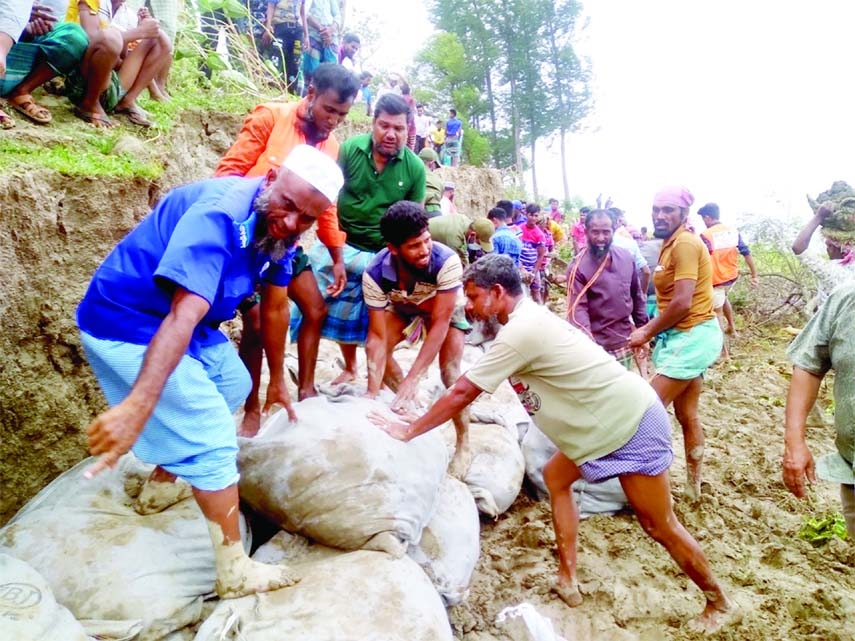
Our Correspondent :
Galachipa Upazila under Patuakhali district is situated beside the Bay of Bengal and surrounded by various big rivers. The rivers have infrequent char areas. Most of the people in these Char areas make a living by catching fish. But there are no fish in the river like before. Most of the fishermen are extremely poor and are held captive by money lenders.
They cannot sell fish at a fair price and their fortunes are not changing. Gradually they become poor to poorer. Again every year various types of natural disasters such as devastating cyclones, heavy tidal surges thump these char areas.
To address the impacts of hazards on livelihood, collective multilayer mapping of hazards, vulnerability and seasonality is essential together with current practices and prospects. To reduce the disaster risk Jagonari, an NGO, through financial support of Save the Children has been implementing Forecast Based Early Action for Cyclone Project in the remote rural char areas to address this vulnerability.
When forecast is given for Cyclonic Storm “YAAS”, then the project has promptly taken necessary initiatives for taking early preparation of the vulnerable people like disseminating messages of signal, form group to reduce the damages which caused by the Cyclonic Storm “YAAS”. During Local Cautionary Signal Number 03 is declared, then the project provided 3000.00 taka cash support, hygiene and shelter kits support among 525 number of project participants so that they can take early preparation to reduce loss and damages.
Through the Cash Support, the vulnerable people purchase necessary food items, health care materials, and house repairing materials whose houses are affected by the previous Cyclonic Storm. Through the Shelter kits especially by the tarpaulin, they give shed on the roof so that rain water does not fallen inside their houses and by the other materials, they made strong their households structured so that houses do not fallen down by the cyclonic storm.
A project participant named Rahima says, “By getting the tarpaulin and shelter repairing materials I am able to give shed upstairs my house, so rain water could not fall inside my house and as a result I was able to stay indoors with my children.” This is the only scenario but hundred of households are till now living beside the embankment and in the river side. When tidal surges are rising, the yard of house is submerged in water. The children cannot get out from houses and they have to stay at house without playing.
The embankments were again damaged by the high tide during cyclone. So during Cyclonic storm “YAAS”, the cyclone causes high tides and cracks appear when the tidal water pushes the embankments. The project provides quick support jointly with the local people to repair the embankment. As a result hundreds of houses have been saved from damage.
Non Government and Government have to take initiatives how to save them and their livelihood in the coastal area’s people.

